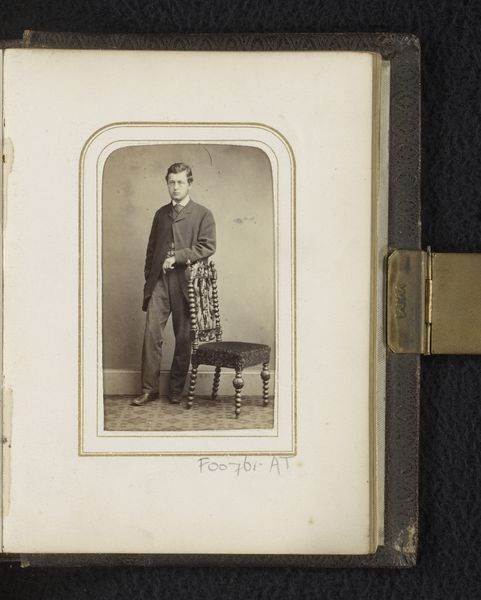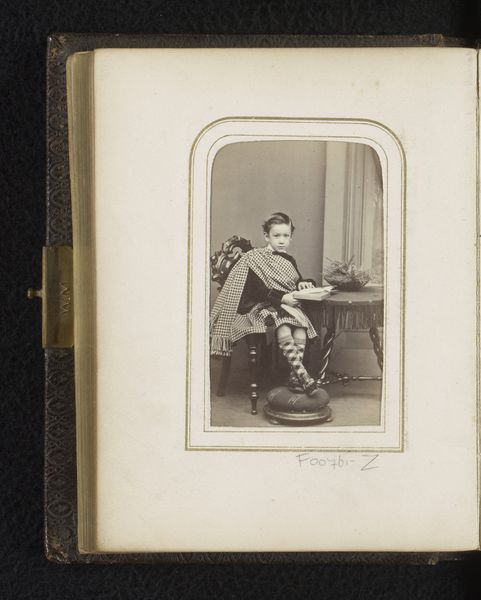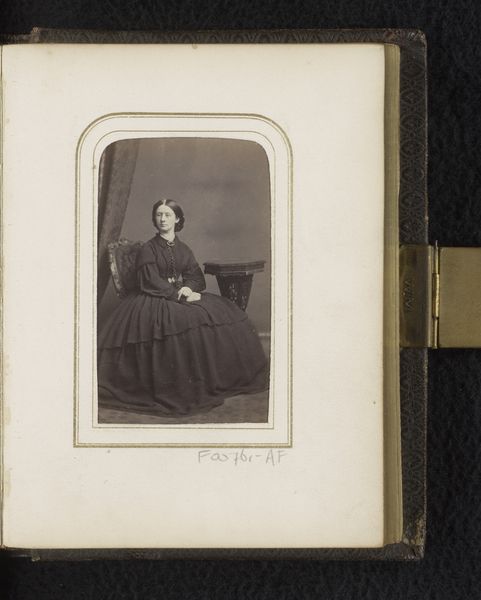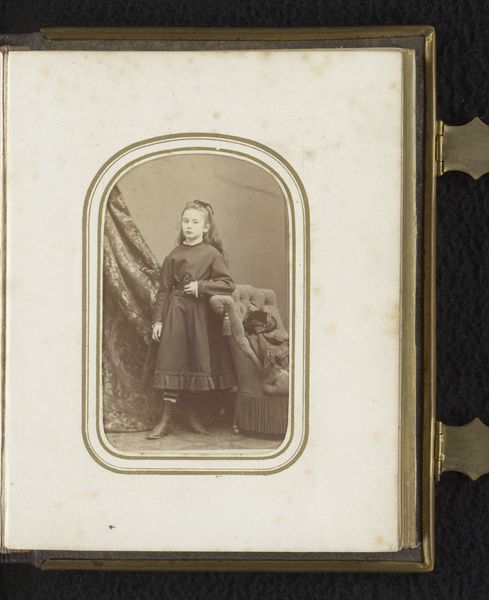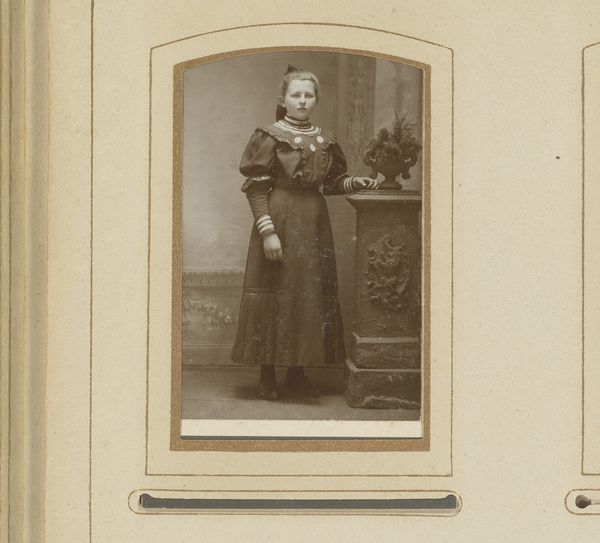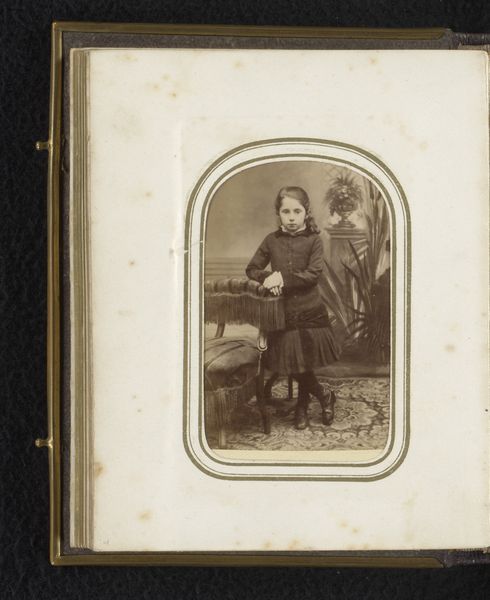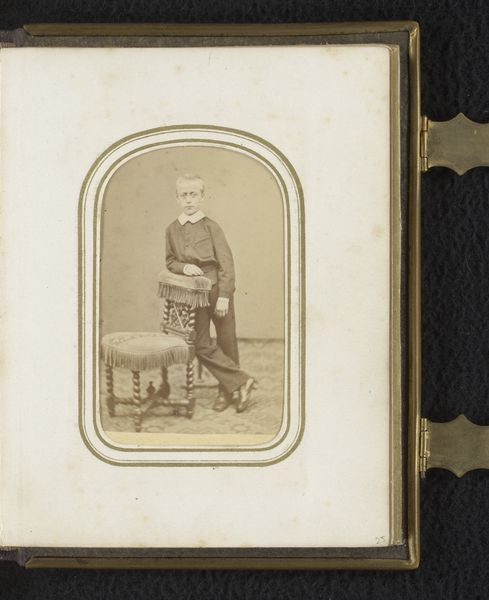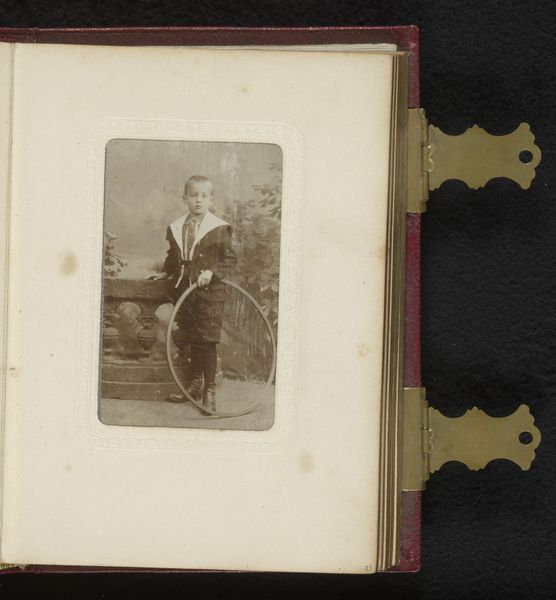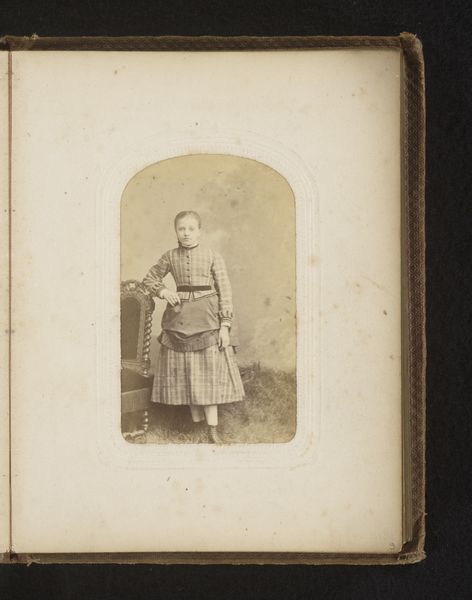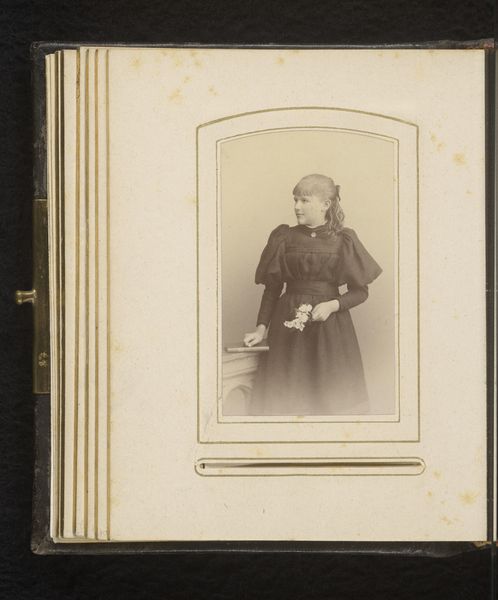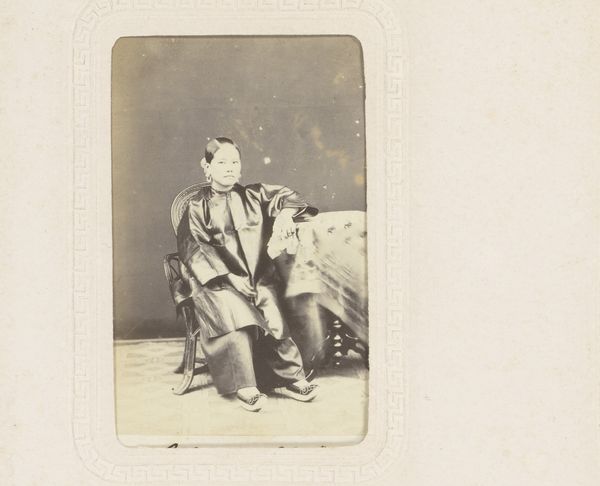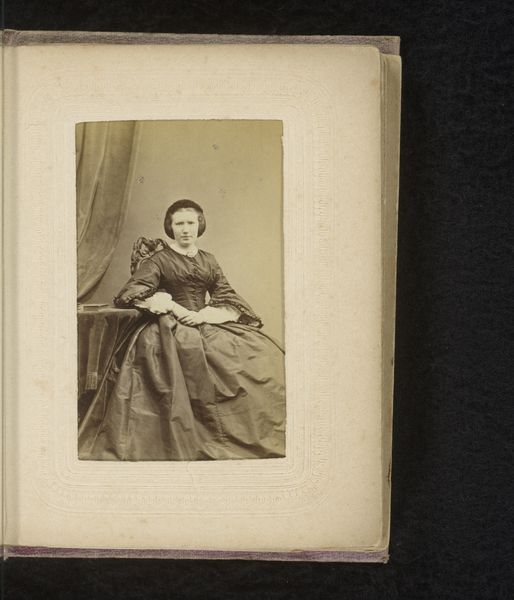
photography
#
portrait
#
photography
Dimensions: height 87 mm, width 51 mm
Copyright: Rijks Museum: Open Domain
Curator: This intriguing portrait presents a young boy adorned in traditional Scottish attire. Captured through photography, likely between 1860 and 1880, it’s attributed to the studio of Richard Allen & Son. Editor: He seems...unenthused. The weight of the plaid, the formal pose...it all seems to constrict the poor lad, doesn’t it? Curator: Precisely. His melancholic air invites a deeper reading. The garments themselves—the kilt, the sporran, the checkered pattern—these carry powerful connotations of Scottish identity. Plaid patterns once denoted kinship; they were cultural emblems suppressed and later revived in romanticized forms. What's preserved or promoted tells its own history, after all. Editor: Right, tartan as a badge of cultural defiance transformed into fashionable display. And this pose, carefully arranged by the photographers, enforces a specific vision. Look at his weary hand propping up his chin; it speaks to the sitter’s ennui and the artificiality of the performance. Do you think he would normally be in this clothing? Curator: It hints at how constructed these national images really were, both in Britain and globally. Think about it. A studio photographer commercializing Highland garb taps into this prevailing Victorian fascination with Scottish identity. They shaped it for audiences, negotiating themes of heritage and idealized traditions in relation to power and control. Editor: All the cultural weight pressing down! But this image preserves that fascinating push-and-pull—idealization vs. reality, display vs. individual experience. It becomes more than just a picture of a bored boy in a kilt. Curator: Indeed. It resonates far beyond this child’s momentary discomfort to remind us that cultural identity itself is a layered performance, shaped both by its wearers and by outside gazes. Editor: Thanks, that shifts how I’ll look at Highland kitsch in the future. It’s no accident that a symbol comes to represent what it does; instead, it's by design.
Comments
No comments
Be the first to comment and join the conversation on the ultimate creative platform.
